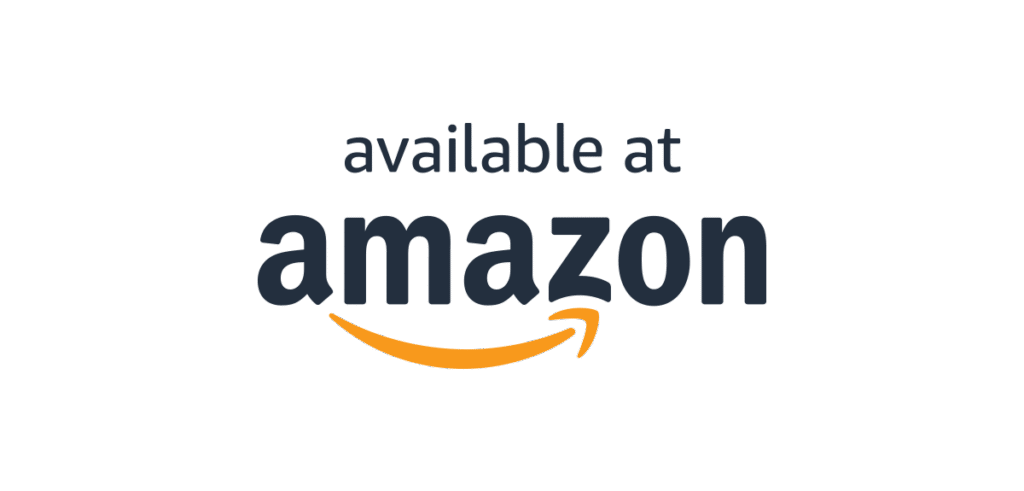
Introduction to Digital Nomadism
Digital nomadism represents a revolutionary shift in how individuals perceive work and lifestyle. A digital nomad is someone who leverages technology to earn a living while engaging in a location-independent lifestyle. Typically, these individuals work in fields such as freelance writing, web development, or graphic design, utilizing remote working opportunities that allow them to travel freely. The appeal of this lifestyle lies in its inherent flexibility, empowering individuals to choose where they work, often leading to experiences in diverse cultures and environments.
The rise of the gig economy and advancements in communication technology have catalyzed the digital nomad movement. Many self-employed professionals are now opting to ditch the confines of a traditional office job in favor of a more adaptable working arrangement. This lifestyle resonates with those who have a desire for travel and adventure, as well as the independence to manage their time effectively. With the ability to explore new cities or countries, a digital nomad’s journey often becomes an integral part of their daily routine, enhancing both personal and professional growth.
Moreover, the motivations for adopting a digital nomad lifestyle are multifaceted. Many are driven by the quest for self-discovery and personal fulfillment, whereas others seek to reduce living costs through strategic travel. Furthermore, the potential to create passive income streams can be enticing for those who want financial stability while pursuing their passions. The contrast with traditional jobs is stark; where office-bound employees might be tied to a desk in a corporate environment, digital nomads embrace a life rich with experiences, characterized by freedom and opportunities for personal transformation.
The Benefits of Being a Digital Nomad
The lifestyle of a digital nomad offers numerous advantages that attract a growing number of individuals, particularly those who are self-employed or engaged in freelance work. One of the most significant benefits is the flexibility of work locations. Unlike traditional office jobs that tether employees to a specific workspace, digital nomads can work from virtually anywhere—be it a beach in Southeast Asia, a café in Paris, or the comfort of their home. This flexibility allows individuals to choose environments that inspire creativity and enhance productivity.
Another noteworthy advantage is the diversity of experiences that come with travel. As digital nomads traverse different countries and cultures, they often immerse themselves in various lifestyles, cuisines, and histories. This exposure broadens perspectives and can lead to personal growth. Moreover, such experiences often foster a sense of community among fellow nomads, creating networks that provide support and share insights about remote working.
In addition to personal enrichment, this lifestyle can significantly improve work-life balance. Many digital nomads find that they can structure their work hours to suit personal preferences or commitments, paving the way for increased freedom and autonomy. This balance often results in heightened job satisfaction, as individuals can prioritize both their professional goals and personal well-being.
Cost savings also play a critical role in the benefits of being a digital nomad. Often, the cost of living in popular nomad hubs is lower than in major cities, allowing individuals to save money or invest in experiences that enrich their travels. As a result, many digital nomads are able to generate passive income through online ventures, further enhancing their financial stability while enjoying the journey. Personal testimonies from seasoned digital nomads highlight that this lifestyle not only increases career opportunities but also enriches life experiences in profound ways.
Essential Skills for Digital Nomads
Becoming a successful digital nomad requires a unique set of skills that cater to the demands of remote working environments. Unlike traditional jobs that often offer structured environments, digital nomads must adapt to varying circumstances and locations, making it crucial to develop both technical and soft skills.
Technical skills are foundational for most digital nomads, particularly those looking to engage in freelancing opportunities. Professions in web development, graphic design, digital marketing, or content creation are all well-suited for self-employed individuals. Those equipped with knowledge of programming languages, SEO strategies, or design software can manage projects and deliver results from anywhere in the world. The versatility of technical skills allows digital nomads to choose their clients wisely and optimize their income streams, potentially paving the way for passive income through passive projects such as online courses or e-books.
However, technical capabilities alone are not enough. Soft skills play an equally critical role in establishing a successful freelance career in a nomadic lifestyle. Effective communication is paramount, as it enables digital nomads to collaborate with clients and peers across various cultures and time zones. Time management becomes another essential skill; being disciplined about deadlines and managing one’s schedule is necessary when working independently. Moreover, strong networking abilities can lead to new opportunities and partnerships, which are invaluable for self-employed professionals.
It’s also important for digital nomads to cultivate self-discipline. The freedom that comes with working remotely can lead to distractions, making personal accountability vital for maintaining productivity. Recognizing one’s working patterns and creating adaptable routines can significantly enhance both work efficiency and personal satisfaction. By honing these essential skills, aspiring digital nomads can thrive in their journeys and build a rewarding, flexible lifestyle that aligns with their professional goals and travel aspirations.
Finding Remote Job Opportunities
As the digital economy continues to expand, the variety of remote job opportunities available for digital nomads has significantly increased. To begin your journey as a self-employed professional, it is crucial to identify reliable platforms dedicated to remote work. Popular job boards such as Remote.co, We Work Remotely, and FlexJobs specialize in listing job openings specifically for remote roles. These platforms provide a wide array of freelance and full-time positions across numerous industries, making it simpler for remote workers to discover opportunities aligned with their skills and interests.
In addition to dedicated job boards, networking is a vital strategy for uncovering legitimate remote opportunities. Engaging in online communities, attending virtual meetups, or participating in forums focused on your niche can lead to valuable connections. Platforms such as LinkedIn are instrumental in expanding your network, allowing you to not only connect with potential employers but also to seek recommendations from industry peers. Building and maintaining relationships within your network can often lead to referrals and insider knowledge of unadvertised roles.
When applying for remote positions, customizing your resume and cover letter is essential. Highlighting relevant skills that appeal to the expectations of remote work is key. For instance, emphasize your ability to manage time effectively, collaborate with teams across different time zones, and adapt to various communication tools. Many employers look for candidates with experience working independently, so be sure to showcase instances during your freelance careers that demonstrate successful self-directed projects or initiatives.
Several industries actively seek remote talent, including technology, marketing, customer support, and creative fields. Understanding which sectors are in demand can help direct your efforts and maximize the potential for securing a fulfilling role while traveling. With persistence and strategic planning, you can successfully navigate the remote job market and embrace the freedom that comes with being a digital nomad.
Establishing Your Digital Nomad Toolkit
As the desire to become a digital nomad grows, so does the need for a well-organized toolkit that supports self-employed individuals pursuing a freelance lifestyle. Central to this toolkit are software solutions that facilitate project management, enabling efficient collaboration and organization while traveling. Tools such as Trello, Asana, or Notion can help in planning tasks and tracking progress, ensuring that remote working remains productive and hassle-free.
Effective communication is another crucial element of any digital nomad’s toolkit. Apps such as Slack, Zoom, and Microsoft Teams allow for seamless interaction with clients and team members, regardless of geographical location. These platforms support group chats, video conferences, and file sharing, making it easier to maintain productive relationships while on the move.
Data storage is a fundamental aspect of remote working, particularly when it comes to safeguarding important files. Cloud storage solutions like Google Drive, Dropbox, and OneDrive provide easy access and sharing capabilities while ensuring that work is backed up securely. With reliable internet access, a digital nomad can retrieve files or collaborate on documents from virtually anywhere in the world.
When traveling, having the right travel-related applications can significantly enhance the experience for freelancers. Apps such as Skyscanner for flight comparisons, Airbnb for accommodation, and Google Maps for navigation are invaluable for finding the best routes, deals, and local hotspots. Additionally, organizing a mobile office setup is essential to optimize productivity while abroad. Noise-canceling headphones, portable chargers, and a reliable laptop stand can transform any café or co-working space into an efficient work environment.
Building the right toolkit is essential for any digital nomad aiming for a successful, mobile professional life. With the appropriate software and resources, individuals can confidently navigate the challenges of a flexible work arrangement, all while enjoying the freedoms that travel and remote working offer.
Choosing Your Travel Destinations
One of the most exciting aspects of being a digital nomad is the ability to choose your travel destinations based on personal preferences and professional needs. When selecting a location, several factors should be taken into account to ensure both productivity and enjoyment. A primary consideration is the cost of living. As a self-employed individual or freelancer, budgeting effectively is essential. Many digital nomads gravitate toward regions where their income allows for a comfortable lifestyle, significantly lowering expenses while traveling.
Internet connectivity is another critical factor in choosing your travel destination. As remote working relies heavily on stable, high-speed internet, researching and ensuring that your destination has reliable access is paramount. It’s advisable to consult online resources and forums, where fellow digital nomads share experiences and insights about different locations’ connectivity. Places like Chiang Mai in Thailand and Tbilisi in Georgia are often highlighted for their blend of affordability and good internet.
The local culture is equally important. Immersing yourself in the environment can enhance the remote working experience, making it more fulfilling. Exploring local customs, cuisine, and activities can also help in networking with other freelancers and remote workers, creating a community that supports your transition to a nomadic lifestyle. Additionally, understanding visa regulations is crucial; various countries have different rules for digital nomads, some even providing specific visas catering to self-employed professionals.
For those looking for popular destinations, cities like Bali, Lisbon, and Medellín frequently attract digital nomads, offering vibrant environments alongside adequate facilities. However, exploring less-traveled places can often yield unique experiences that enrich your travel journey. Destinations such as Sofia in Bulgaria or Split in Croatia might not be on the main radar yet provide an appealing mix of culture and lower costs. In conclusion, by considering factors such as cost, connectivity, culture, and visa rules, digital nomads can effectively choose their travel destinations to enhance their freelance lifestyle.
Managing Finances on the Road
For those embracing the digital nomad lifestyle, managing finances effectively is crucial to ensure stability while traveling. Budgeting is the first step in maintaining your financial health. It is important to create a comprehensive budget that accounts for all travel-related expenses, including accommodation, food, and entertainment, while also factoring in your self-employed income. As many digital nomads are freelancers, they often experience fluctuations in their earnings. Planning for these variations by allocating funds for lean months can help maintain a steady cash flow.
Maintaining a steady income as a digital nomad often involves diversifying income streams. Freelancing platforms can be an excellent source for finding remote work, while online courses, blogs, or other engaging projects can provide passive income. This diversified approach not only allows greater flexibility but can also alleviate financial stress while on the move. Additionally, managing currency exchanges is another aspect to consider. Exploring local currency rates and using financial applications can help reduce the cost of conversions. Keeping up with the latest rates ensures that you have the best possible value for your money when traveling to different countries.
Effective use of banking apps is essential for a digital nomad. These tools enable users to monitor finances in real-time, track expenses, and conduct transactions with ease, reducing the risk of financial mismanagement. Furthermore, having a reliable travel insurance policy is vital for safeguarding health and finances while exploring new destinations. Insurance can cover unexpected events, such as medical emergencies or equipment loss, which is pivotal for maintaining peace of mind during your travels. In conclusion, managing finances as a digital nomad requires diligent budgeting, steady income generation, efficient currency management, and having suitable insurance coverage, all of which contribute to a successful and sustainable remote working experience.
Building a Community as a Digital Nomad
For individuals who pursue a lifestyle as digital nomads, building a supportive community becomes essential. As self-employed professionals who travel frequently, it often becomes challenging to maintain personal connections. However, establishing a community can greatly enrich the nomadic experience, providing both social interaction and professional networking.
One effective way to connect with fellow digital nomads is through various online platforms. Websites like Meetup, Facebook Groups, and dedicated forums allow nomads to exchange information, tips, and experiences. Joining virtual communities can help in locating others who share a similar lifestyle, making it easier to plan casual meetups or collaborative projects. These platforms often serve as a vital resource for finding coworking spaces that accommodate remote workers and facilitate networking opportunities.
In addition to online communities, co-working spaces serve as hubs for digital nomads to engage with one another. By sharing the same physical environment, remote workers can leverage opportunities for collaboration and support. Co-working spaces frequently host events, workshops, and networking sessions, allowing individuals to foster professional relationships while contributing to a vibrant work atmosphere. These spaces not only enhance productivity but also create a sense of belonging among those who lead a freelance lifestyle.
Local meetups present another valuable avenue for connection. Attending events organized by other nomads or local entrepreneurs can help expand one’s network and deepen personal relationships. Engaging with other like-minded individuals fosters an environment of support, where both personal experiences and professional challenges can be discussed openly.
Ultimately, cultivating a community as a digital nomad can provide emotional support and accountability, which is crucial while navigating the complexities of remote working and travel. Such connections enrich the nomadic journey, turning it into a more fulfilling and collaborative experience.
Next Steps: Transitioning to a Digital Nomad Lifestyle
Transitioning to a digital nomad lifestyle requires thoughtful planning and dedicated execution. The first step in this journey is to make a detailed plan. Assess your current situation, considering your professional skills and lifestyle preferences. What type of remote work aligns with your skill set? Freelance opportunities, remote positions, and self-employed endeavors are increasingly available across numerous fields. By identifying your strengths, you can target the right job market to secure a reliable source of income while you travel.
The next action is to actively seek remote work opportunities. Online platforms such as Upwork, Freelancer, and Remote.co offer numerous listings specifically for freelancers and self-employed individuals. Craft a compelling profile that highlights your experience and skills, and be prepared to showcase your work through portfolios or project examples. Networking plays a crucial role in finding remote positions; utilize platforms like LinkedIn to connect with like-minded professionals and potential employers. Engaging with communities focused on remote working can also provide insights and job leads.
Taking small, manageable steps towards full-time nomadism is essential for a successful transition. Begin by testing the waters—choose a short trip to a location that interests you, while ensuring you can work during your travels. This short-term experience will help you understand the logistics of traveling while maintaining a work-life balance. Consider establishing multiple streams of passive income as this strategy can offer financial security when pursuing a digital nomad lifestyle. Content creation, online courses, and investments can serve as additional sources of income.
Finally, stay tuned for our forthcoming book, which will provide more in-depth guidance on becoming a successful digital nomad. It will cover strategies, challenges, and practical advice sustained by real-life experiences of fellow travelers. The freedom of a digital nomad lifestyle awaits; prepare yourself to embrace this exciting journey.
Want to stay in touch and get the latest articles?
Sign up for the Oryx Trail Company Newsletter














